
 The logical place to start a search for the Slavs of Buenos Aires is the immigration museum Museo de la Inmigracion in the Puerto Madero neighborhood. The museum is housed in the former Hotel de Inmigrantes, Argentina's Ellis Island. Among the objects on display is a medalion from a local Polish group.
The logical place to start a search for the Slavs of Buenos Aires is the immigration museum Museo de la Inmigracion in the Puerto Madero neighborhood. The museum is housed in the former Hotel de Inmigrantes, Argentina's Ellis Island. Among the objects on display is a medalion from a local Polish group.
Click here for a description of the Hotel de Inmigrantes by a Slovak immigrant, from the city tourism office's audio guide (mp3 file).


The most visible Slavic tourist attraction in Buenos Aires is the Russian Orthodox Church of the Holy Trinity, in the San Telmo neighborhood. The church was designed by architect Mikhail Preobrazhensky and adapted by architect Alejandro Christophersen. It opened in 1904.
An mp3 description of the church from the city tourism office's audio guide can be heard here.
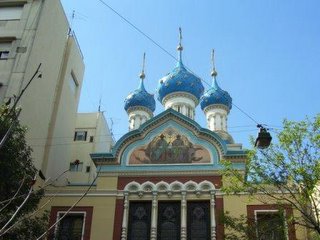

There are also a couple Russian restaurants in town, such as the popular nightspot El Samovar de Rasputin in the La Boca neighborhood and the chic El Kozako in Palermo.
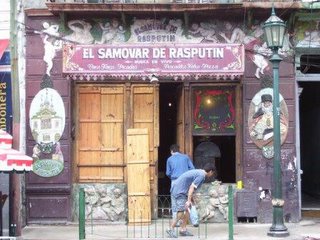
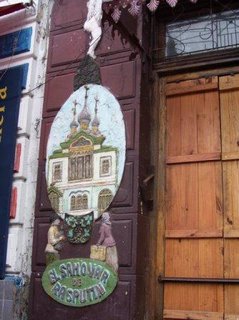
 Ukrainians are much less visible, though there was at least one restaurant downtown, at the corner of Avenida Belgrano and Azopardo. Though the sign was still up, the restaurant has closed.
Ukrainians are much less visible, though there was at least one restaurant downtown, at the corner of Avenida Belgrano and Azopardo. Though the sign was still up, the restaurant has closed.
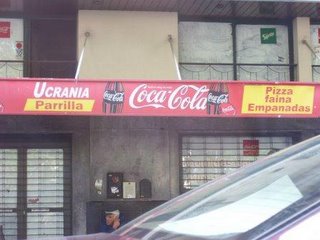
Poles, on the other hand, enjoy quite a few prominent reminders of their presence in Buenos Aires. Most impressive is the beautiful Casa Polaca in the Palermo Viejo neighborhood. There is a Polish restaurant in the basement, and Polish language classes upstairs.

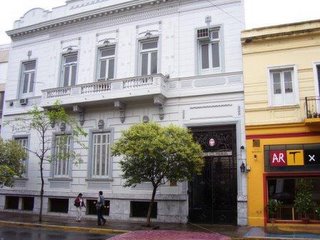 Elsewhere in Palermo, Polish astronomer Copernicus is commemorated by a monument at the planetarium. The city tourism office's audio guide also includes the planetarium, here.
Elsewhere in Palermo, Polish astronomer Copernicus is commemorated by a monument at the planetarium. The city tourism office's audio guide also includes the planetarium, here.



The Croatian community has been quite prominent in Buenos Aires society, and Nikola Mihanovic in particular. Mihanovic arrived in Argentina from Dalmatia in 1867 and by 1909 he owned a fleet of 350 ships. By 1918 he employeed more than 5000 people, many of them Croats. Though it has no obvious Croatian connection, a former ferry docked in the La Boca district featuring a craft fair and a cultural center does carry the name Nikola Mihanovic.
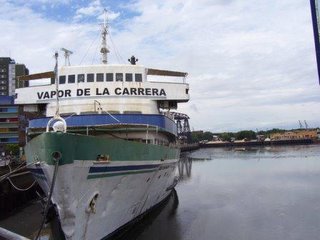
Serbs are also easy enough to find in Buenos Aires. One prominent landmark is the beautiful Byzantine-style St. Mary Serbian Orthodox Church in the Constitution neighborhood, and another is St. Sava in San Telmo.
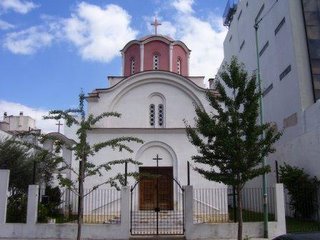

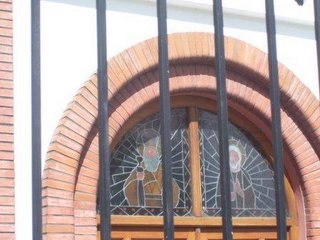
A good backgrounder is Michael Soltys's 1998 "A different kind of multinational: Immigrants to Argentina from Eastern Europe" from the Buenos Aires Herald. In addition to information about Hungarians, Lithuanians and Romanians, the article covers Czechs, Slovaks, Poles, Ukrainians and Slovenes. There has also been at least one book about Montenegrins in Argentina, though most live outside of the capital. The web also has a set of links about Russians in Argentina.
The full set of the city tourist office's audio guides, featuring twelve neighborhoods, can be found on the office's website.

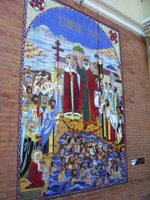






3 comments:
Hello,
Bravo! Congratulation for the article.
There is a web site of the Montenegrin community in Buenos Aires and Chako, www.montenegrinos.com.ar
I am the autor of the book, Montenegrins in Argentina and Montenegrin emigration in Argentina.
Thanks and all the best
Gordan Stojovic
gordans@gmail.com
This is a good post. I live just around the corner from that church in San Telmo but didn't realize it was Serbian Orthodox.
Now I also have to go in search of Stojovic's books.
One of the things that the city of BA has is that there are shows and plays almost every night of the week. When I was there, I used to go to the theatre all Thursdays. My buenos aires apartment was located in downtown, so all of the theatres in Corrientes St. were close to where I lived. The tickets cost around 100 Argentine pesos. And all artists are great, you will see great quality shows!
Post a Comment